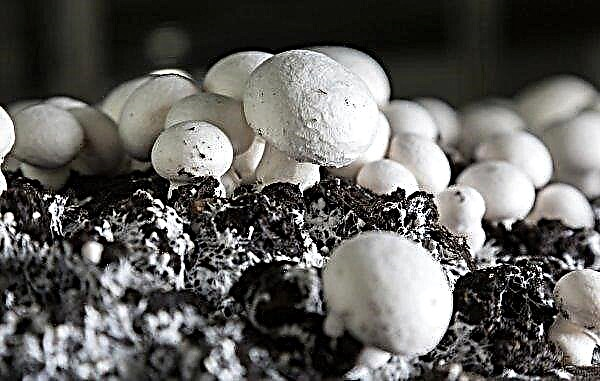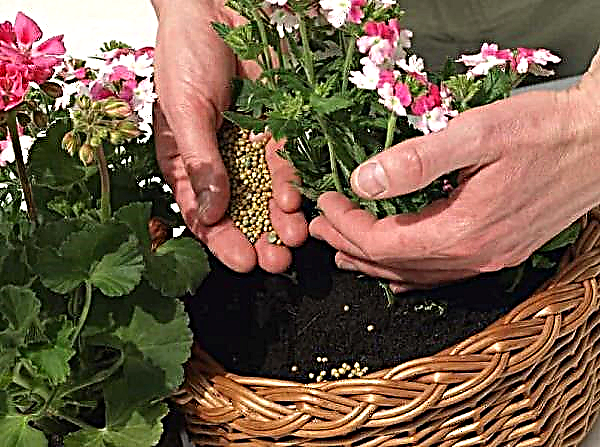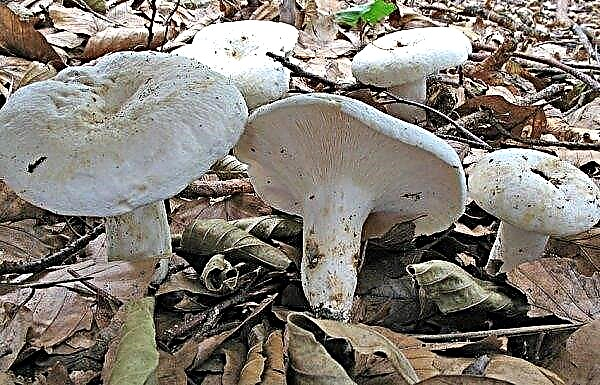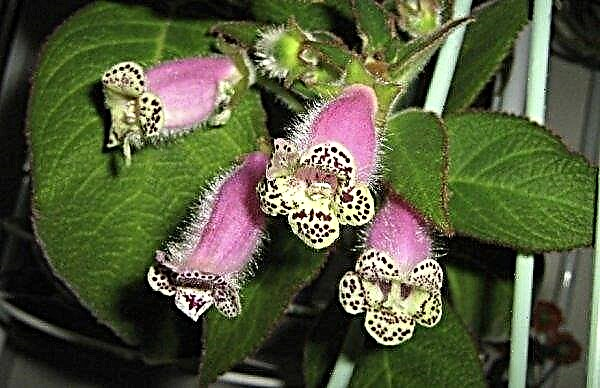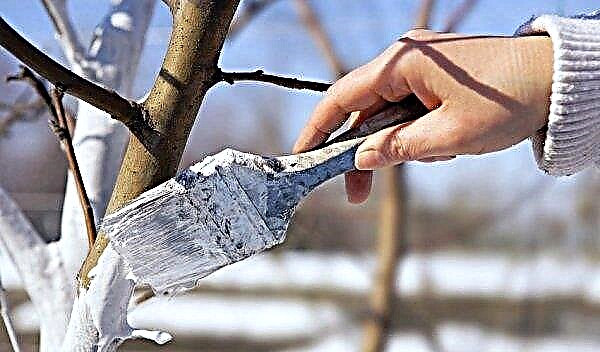Ficus Benjamin is most often exposed to various kinds of diseases as a result of a lack of proper care and violations of the microclimate. About what ailments affect the plant and how to conduct their treatment, read below.
The main diseases of ficus Benjamin and methods of dealing with them
The most commonly considered plant is exposed to diseases that provoke fungal spores, progressing in a particular environment:
- powdery mildew;
- anthracnose;
- gray rot;
- cercosporosis;
- soot fungus;
- root rot.
Powdery mildew
The disease is caused by a fungus. It develops with elevated temperature indicators and sharp fluctuations in the level of humidity, if the spores were in the soil or on neighboring plants. Another reason for the development of powdery mildew is an overabundance of nitrogenous fertilizers. The first sign of the disease is the appearance of a white coating on the leaves and young shoots. Over time, the coating darkens, acquiring a white-gray color, and then brown. This plaque is a mycelium that functions and develops thanks to the plant, absorbing nutrients from its tissues.
The first sign of the disease is the appearance of a white coating on the leaves and young shoots. Over time, the coating darkens, acquiring a white-gray color, and then brown. This plaque is a mycelium that functions and develops thanks to the plant, absorbing nutrients from its tissues.
Important! Powdery mildew spores are stored in the soil and may not be felt for a long time until a favorable moment for their reproduction occurs, therefore, it is necessary to treat the soil before planting / replanting plants with various disinfecting compounds.
Reproduction occurs due to spores that, when examined in detail, look like balls of brown color.
The mycelium blocks the access of oxygen to leaves, shoots and interferes with the photosynthesis process. Plant tissues stop their growth. Leaves wither, darken and fall.
At the first signs of powdery mildew, all affected parts of the plant must be removed. Slices are dusted with wood ash. Then carry out the treatment with the drug "Fitosporin-M Resuscitator". The drug is diluted with water in a ratio of 1:20. Abundant spraying is carried out on the sheet, after 10 days, re-treatment is done.
With severe damage, the drug is diluted with water in a ratio of 1: 2. Treatments are also carried out at intervals of 10 days.
Anthracnose
The disease is caused by fungal spores of the genus Colletotrichum. They rapidly progress at high humidity (80–90%) and high temperatures (+22 ... + 27 ° С). Weakened plants suffering from a lack of potassium and phosphorus become infected more quickly. The source of infection may be untreated soil, diseased plants and poorly processed tools. All ground parts of the ficus are affected by spores. Initially, brown spots appear on the foliage, which dry out over time. A purple border forms around them. Gradually affected parts of the plant die off. As a result of the cessation of food intake, the shoots fade. If you do not carry out the appropriate treatment, the plant dies.
All ground parts of the ficus are affected by spores. Initially, brown spots appear on the foliage, which dry out over time. A purple border forms around them. Gradually affected parts of the plant die off. As a result of the cessation of food intake, the shoots fade. If you do not carry out the appropriate treatment, the plant dies.
First of all, when a disease is detected, all affected parts of the plant are removed. Then carry out the processing of copper-containing drugs. Copper sulfate will do. 1 tsp substances are dissolved in 2 l of water, the temperature of which exceeds + 50 ° C. The solution is stirred until the powder is completely dissolved, and then cooled to room temperature.
Spraying on the sheet and watering under the root. The interval between treatments is 14 days.
In addition to treatment with fungicide, it is necessary to adjust the humidity regime and reduce watering to a minimum.
Gray rot
It progresses in warm rooms with high humidity. Called by Gloeosporium, Colletotrichum. The first sign of illness is a gray coating on the leaves. When shaking off, a ball of dust rises into the air. Foliage under a raid gradually darkens and completely dies. To eliminate the ailment you need:
To eliminate the ailment you need:
- Remove the affected parts of the ficus.
- Dust off the sections with ash.
- Adjust humidity mode, reduce watering.
- Adjust the temperature.
- Carry out the treatment with the Phytosporin-M Resuscitator fungicide according to the same scheme as in case of powdery mildew.
Important! “Fitosporin” is a biological preparation that contains useful trace elements in its composition, therefore, after treatments with its use, feeding is not necessary for a month. This can provoke an overabundance of nutrition in plants, which also negatively affects immunity, as well as its lack.
Cercosporosis
Most often, cercosporosis progresses with increased humidity. Caused by fungi Сercospora spp. The first signs begin to appear on the inside of the leaf plates. These are small black dots. Over time, the leaves become yellow, die off and crumble.
First of all, they reduce watering and organize good ventilation in the room. All affected parts are removed. Conduct treatment "Furacilin." 1 tablet is dissolved in 100 ml of boiling water. Cool the solution to room temperature, spraying on the sheet. About 1 tsp of wood ash is embedded in the soil to a depth of 1 cm.
Sooty mushroom
The fungal disease affects Benjamin's weakened and young ficus, contained in conditions of high humidity in poorly ventilated areas. Soot fungus also progresses in conjunction with pests (aphids, mealybugs and others, releasing sticky substances in the process of life). Spores of the fungus overlap the pores of plant tissues, inhibiting photosynthesis.
Spores of the fungus overlap the pores of plant tissues, inhibiting photosynthesis.
In the initial phase of the disease, a black coating similar to soot forms on the leaves. It is easily removed with a damp sponge. First, these are small areas that grow over time and cover the entire surface of the sheet.
A characteristic feature of the soot fungus is that a black coating is formed only on the outside of the leaves, a sticky coating appears on the inside even in the absence of pests. As a result, the affected parts die.
If the first symptoms are detected, you need:
- Reduce room humidity by up to 50%.
- Reduce watering.
- Provide access to fresh air.
- Remove affected parts.
- Perform treatment with Fitoverm, diluting 10 ml in 1 liter of water (2-3 treatments with an interval of 10 days).
Did you know? Ficuses belong to the mulberry family. Their closest relative is mulberry.
Root rot
Infection with the fungi Rhizoctonia, Pythium and Phytophthora leads to the development of root rot. Spores affect the rhizome or the lower part of the stem. The affected area turns black and begins to decompose. Contributes to the development of the disease soil moisture. Infection occurs when a poor-quality substrate containing spores is used, and from a diseased plant to a healthy one with a tool that has not been processed. The development of the disease also contributes to irrigation with cold water.
Infection occurs when a poor-quality substrate containing spores is used, and from a diseased plant to a healthy one with a tool that has not been processed. The development of the disease also contributes to irrigation with cold water.
The disease is signaled by the appearance of the plant. Leaves lose turgor and become covered with dark spots. It seems that the plants have not been watered for a long time, but the soil is well moistened. If you remove the topsoil, there will be noticeable darkening on the roots.
In case of infection with root rot, an urgent transplant is necessary with a complete replacement of the earthen coma and pot. Pre-pot is treated with a solution of "Furacilin" and dried thoroughly.
The soil is light, permeable:
- 1 part of sod-leaf soil;
- 1 part peat;
- 1 part of sand.
The soil must be disinfected in the oven. It is calcined at a temperature of + 100 ° C for 15 minutes. After that, they spill with a solution of wood ash. To 1 liter of water add 1 tbsp. ashes. Water is not poured too much, so that its moisture content is about 50%.
After removing the plants from the pot, the earth is shaken off, which separates well, the residues are washed off under running water. All affected parts of the root are removed. Powdered with “Fundazol” - consumption 10 g. Dry the roots for 2 hours, then plant.
Features of the fight against leaf diseases
Inappropriate indoor microclimate and improper care also provoke leaf diseases.
Did you know? The rubbery ficus juice consists of 15% rubber. This plant was the main raw material for the manufacture of latex, until a method was found to obtain it synthetically.
One of the most common is yellowing of sheet plates and their falling. This pathology is caused by overdried air. Often manifested in winter in plants located in close proximity to heating appliances. Yellowing and falling of leaves can also be caused by stress that plants experience with a frequent change of location.
Often manifested in winter in plants located in close proximity to heating appliances. Yellowing and falling of leaves can also be caused by stress that plants experience with a frequent change of location.
Large loss of foliage leads to the death of the plant. Correct the situation by installing humidifiers and selecting a suitable place. If it is not possible to move the plant away from the battery, it must be covered with a damp cloth and constantly monitored so that it does not dry out.
As a result of malnutrition, the leaves of Benjamin's ficus form underdeveloped, become smaller, and the old ones turn yellow and crumble. In this case, you need to transplant into a new nutrient substrate, which will include peat, humus and sand in equal proportions.
As a disinfectant and enriching soil, you can use Fitosporin. To 1 liter of water add 1 g of the drug.
Leaf death can be caused by infections, viruses or pests. In such cases, you need to diagnose by examining all the leaves and shoots under a magnifying glass. It is also worth removing the topsoil and assessing the condition of the roots. With severe lesions, it is better to transplant and treat with fungicides.
If there are pests, use insecticides.
What is the danger of ficus diseases
Diseases of ficus Benjamin are dangerous by the complete fading of the vital processes of the plant. In addition, fungal diseases spread very quickly from plant to plant, which is fraught with the loss of all representatives of the flora in the house.
Preventive measures
In order to avoid the spread of diseases, it is necessary to carry out preventive measures in time, which include maintaining the optimal microclimate in the room and proper care.
Basic preventive measures:
- Maintaining the temperature regime within +17 ... + 25 ° С.
- Maintenance of humidity within 60%.
- High-quality airing of rooms.
- Annual transplant for plants up to 3-4 years, then every 2 years.
- Watering only after the topsoil has dried to a depth of 2–4 cm.
- Providing a plentiful stream of diffused light.
- The introduction of complex dressings from May to September once every 2 weeks.
- Timely removal of old, broken, underdeveloped and thickening crown shoots.
- High-quality soil disinfection during planting / transplanting.
- Preventive treatment "Fitosporin" times for the entire period of active vegetation.
Did you know? Ficus Benjamin is a valuable medicinal plant. Its leaf plates, crushed into pulp, help heal wounds.
Most often, Benjamin's ficus is exposed to fungal diseases. You can avoid their spread by carrying out proper care of the plant.

